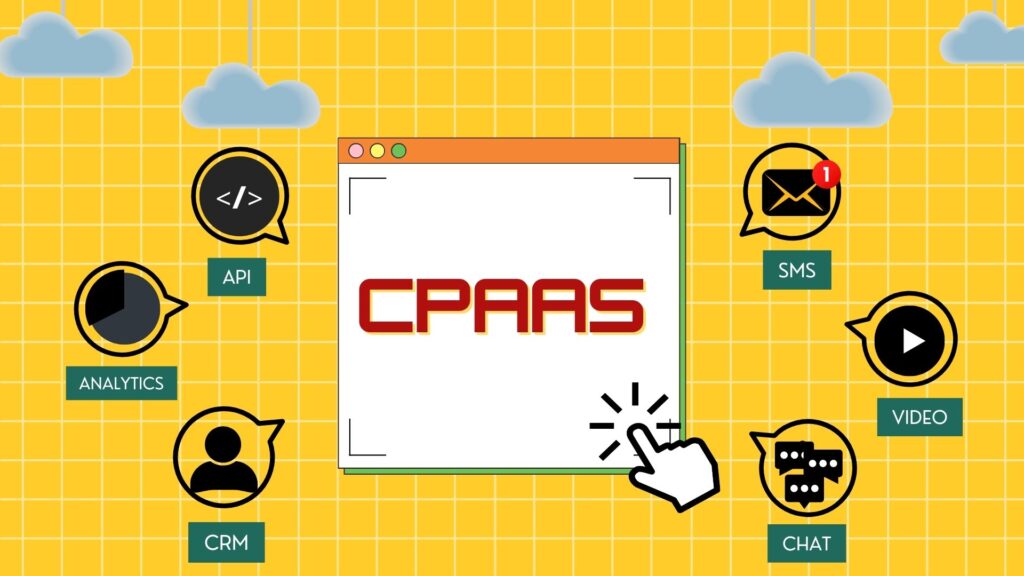Opening
Do you know about the three information technologies called CPaaS, UCaaS, and XCaaS? sound similar but certainly very different. Since digital technology has become a trend it’s driving many companies to digitally transform, it is important for companies to choose a technology platform that can support technology capabilities and simplify its management. Companies need to think about how to use the right information technology resources to produce operational efficiency, and meet customer demands, as well as costs that tend to be low. Companies can try using CPaaS, UCaaS, or XCaas. Before getting confused about which one to choose, consider the following explanation!
What is CPaaS?

CPaaS stands for Communication Platform as a Service, a ready-to-use communication service for your business. CPaaS uses cloud-based platform technology that can add real-time communication features such as chat messages, voice, and text into an application through an API (Application Programming Interface). The technology which emerged in 2008, is focused on helping companies communicate and interact externally with their customers. The CPaaS platform enables enterprises to instantly enhance communication capabilities. Channels that can be used include SMS, WhatsApp, IVR, Email, and so on.
The API technology in CPaaS can be configured for simple or complex communication uses. The API also offers messages for chatbots to function properly on websites. That way, users can interact with customers and work closely with internal business systems to provide appropriate responses. In addition, the API can integrate various features into applications that can facilitate the communication process between users and customers.
What is UCaaS?
Unified Communication as a Service (UCaaS) is a cloud-based communication platform with six communication functions such as enterprise telephony, meetings (audio/video/web conferencing), instant messaging, unified messaging, mobility, and business processes that support communication. In general, this platform is used for internal communication within a company. Users have access to make video calls, chat applications, voice calls, collaboration tools, and cloud-hosted email between employees.
UCaaS is owned, managed, maintained, and delivered by the provider and licenses the service for a monthly subscription fee. The advantage is that the user interface can be made simpler. While the weakness is the inability of UCaaS in adjusting user needs because the provider is in control of this platform.
What is XCaaS?
Experience Communication as a Service (XCaaS) is a cloud-based communication deployment model that removes the boundaries between Unified Communication as a Service (UCaaS) and Contact Center as a Service (CCaaS). XCaaS offers solutions that enable companies to support the communication needs of all employees as they work together to deliver a customer experience.
The contact center is the center of the development emergence of XCaaS. In particular, the contact center influences the deployment of agents to enter other teams with an interest in customer satisfaction such as sales and marketing teams. This reflects the core principle of XCaaS that all employees share the goal of improving the customer experience.
Key Benefits of CPaaS, UCaaS, and XCaaS
- Efficient and Cost-effectiveness
These three communication technologies offer relatively low costs for users. XCaaS integrates UCaaS and CCaaS technologies so that it can provide solutions that can minimize the risk of errors and downtime. With this integration, users will get more cost-effective. With CPaaS users can customize their communication needs and can connect with customers globally without involving multiple operators. Users only need to pay for the traffic sent and can use the infrastructure that is already available. Meanwhile, with UCaaS, users can save on human resource costs and hardware maintenance costs. UCaaS vendors also provide unlimited broadcast calls at a cheaper price than regular telephones.
- offers convenience to users
XCaaS has service level agreements across its platforms which make service delivery more consistent and globally available for employee and customer communications. XCaaS also enforces security and privacy policies so that customer data will be safe. Likewise with CPaas, with API all communication channels can be integrated so that users will more easily communicate with customers. UCaaS will also make internal communication easier. With a plug-and-play system, everything will be handled by the vendor virtually so that this will facilitate the application of the system in the company.
- Reduced IT efforts
CPaaS, UCaaS, and XCaaS can allow companies to minimize and optimize the efforts of IT teams. CPaaS does not need to build a back-end because it is already available in the Cloud. Whereas in UCaaS updates such as security features and other additional features will be available automatically. Therefore the IT team can do other things needed in business processes to make your business more advanced. In XCaaS, IT admins can deploy solutions, enable new users, and deploy bulk policies through the unified console. It supports a single-panel monitoring and reporting system.
Summary
CPaaS, UCaaS, and XCaaS are cloud-based communication technologies designed to make it easier for business people to interact both internally and externally. These three platforms are important for companies to help manage the business and improve customer experience. You can choose one of the three platforms and it is tailored to your business needs.
Do you already know which one to use? You can try the CPaaS platform with an omnichannel solution from OCA Indonesia. Get the free trial right away!
Source
- https://www.gartner.com/en/information-technology/glossary/unified-communications-service-ucaas
- https://exotel.com/id/en/blog/the-beginners-guide-to-leveraging-cpaas/
- https://www.verdict.co.uk/xcaas-ucaas-ccaas-customer-experience-services/
- https://info.calltower.com/
- https://www.8×8.com/blog/what-is-xcaas

Leave a Reply